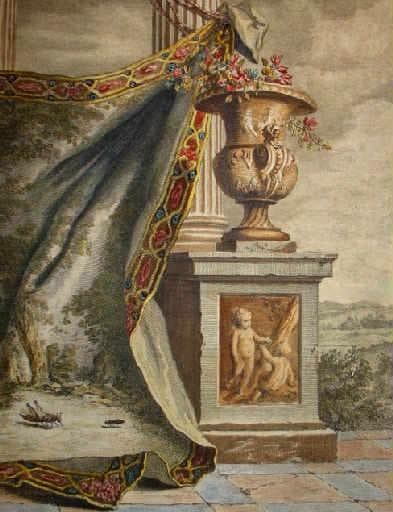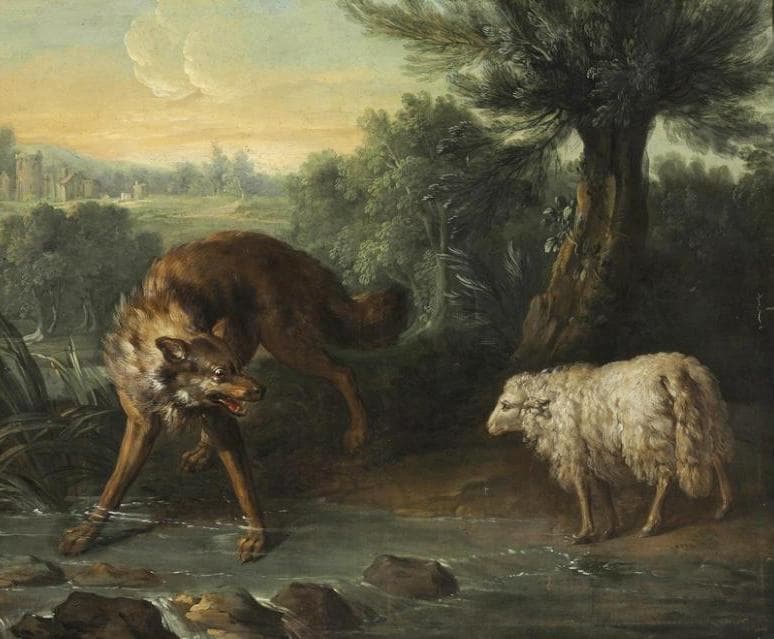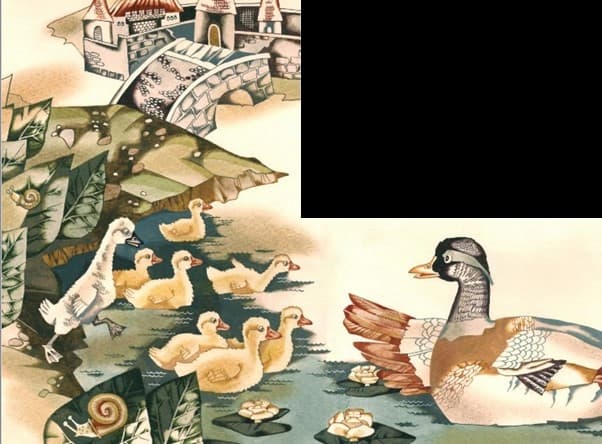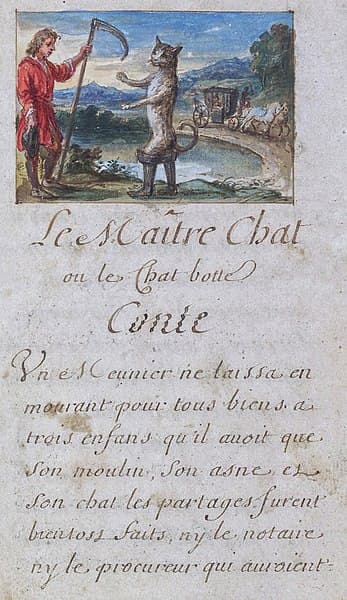The Italian composer Elisabetta Brusa (b. 1954) started composition as a child before attending the Milan Conservatory, where she studied composition. She graduated in 1980 and returned to Milan in 1985 to teach at the Conservatory. Fellowships (Fromm and Fulbright) took her to the US, where she took composition classes at Tanglewood. Three fellowships to the MacDowell Colony followed.
Her orchestral work, Favole (Fables), written in 1982–1983, is inspired by fairy tales by Aesop, Andersen, La Fontaine, and Perrault and covers the world of fairy tale animals.
She starts with the Donkey, who finds a Lion’s skin and scares all the other animals until his hee-haw raw reveals the true nature of the beast. A Fox pulls off the skin and laughs at the change in the beast.
Her music gives us the clopping of the pseudo-lion, the failed roar, and his final bray of frustration at being thwarted.

Arthur Rackham: The Donkey in the Lion’s Skin from Aesop’s Fables, 1912
Elisabetta Brusa: Favole – The Donkey in the Lion’s Skin (Ukraine National Symphony Orchestra; Fabio Mastrangelo, cond.)
The second tale, that of the real and false nightingale, is the same story set by Stravinsky in Le Rossignol. The lyrical melody of the flute represents the real bird, brought to the Emperor, and the mechanical bird by the piccolo and glockenspiel where rhythm rules and emotion flies out the window. The mechanical bird breaks, and the real nightingale triumphs. In Hans Christian Andersen’s tale, the return of the nightingale defeats Death, who has come to take the Emperor.

Vilhelm Pedersen: Illustration for Andersen’s Nightingale, 1843
Elisabetta Brusa: Favole – The Real Nightingale and the Mechanical One (Ukraine National Symphony Orchestra; Fabio Mastrangelo, cond.)
From the Fables of La Fontaine comes the story of the Ant and the Grasshopper. The industry of the ant (depicted by a hammer on an anvil) and the laziness of the grasshopper (given to the saxophone) contrast the business of the ant about its business with the leisurely life of the cabaret-style music. A brush on the guiro is the sound of the grasshopper.

Jean-Baptiste Oudry: Illustration for La Fontaine’s Fables, ca. 1750
Elisabetta Brusa: Favole – The Ant and the Grasshopper (Ukraine National Symphony Orchestra; Fabio Mastrangelo, cond.)
Aesop’s tale of the Wolf and the Lamb contrasts the evil Wolf (brass and lower strings) with the innocent Lamb (wind and strings). The Wolf meets the Lamb at a waterhole and accuses it of various impossible things. The Lamb gently defends itself but to no avail – the Wolf eats the Lamb anyway. Guilty or not, the Lamb must become the Wolf’s dinner. In La Fontaine, the message is ‘Might is right’.

Jean-Baptiste Oudry: The Wolf and the Lamb Meet at the Waterhole, ca. 1755
Elisabetta Brusa: Favole – The Wolf and the Lamb (Ukraine National Symphony Orchestra; Fabio Mastrangelo, cond.)
The oboe is the Ugly Duckling, sad and lonely, mistakenly hatched in a family of Ducks. The Ugly Duckling is grey and ungainly, while the baby Ducks are yellow and fluffy and cute. The Ducks make fun of the Ugly Duckling until, at last, the Swan that he always was emerges. The ascending horn is our new beauty.

Oksana Ignaschenko: The Ugly Duckling, 2017
Elisabetta Brusa: Favole – The Ugly Duckling (Ukraine National Symphony Orchestra; Fabio Mastrangelo, cond.)
The story of the fly that falls into the soup comes next. The tale comes from Greek fables where the fly sums up its life and death as ‘I have eaten, I have drunk, I have taken a bath; if I die, what do I care?’. Brusa has the fly dying in a frying pan in a funeral march that closes with the fly’s ascent to heaven in a glissando of the timpani.

Pirro Ligorio: The Fly in the Soup, 1718
Elisabetta Brusa: Favole – The Philosophical Fly (Ukraine National Symphony Orchestra; Fabio Mastrangelo, cond.)
Opening with three meows in the clarinet, a Royal March signifies the crafty and cunning cat’s plans to help his poor master ascend in society. In Perrault’s story, the cat’s actions enable his penniless master to gain the hand of the princess.

Charles Perrault: Puss in Boots, 1695 (New York: Morgan Library and Museum)
Elisabetta Brusa: Favole – Puss in Boots (Ukraine National Symphony Orchestra; Fabio Mastrangelo, cond.)
Fairy tales are for children…until we see them for what they are: metaphors for the complexity of life. If the Wolf and the Lamb let us know that life can be ‘nasty, brutish, and short’, as Thomas Hobbs thought, The Ant and the Grasshopper shows us the power of industry. Good things can come from poor beginnings, as both the Ugly Duckling and Puss and Boots show us. Look behind the impressive images to see the falsity behind the Donkey in the Lion’s Skin (Elon Musk, anyone?). And, like the Nightingale, be true to the real.
For more of the best in classical music, sign up for our E-Newsletter


